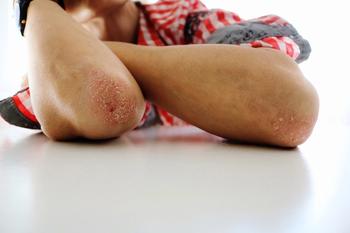
A recent article suggests physicians should be on the lookout for various dermatologic manifestations in pediatric patients suspected of having COVID-19.

A recent article suggests physicians should be on the lookout for various dermatologic manifestations in pediatric patients suspected of having COVID-19.

In this episode, Candrice Heath, M.D., sits down to discuss her recent presentation at the 2020 Skin of Color Update about clinical pearls for kids, tweens and teens with skin of color. Dr. Heath also explains the most common skin conditions for this patient group, treatment challenges, and much more.

This episode discusses how to become a pediatric dermatologist, including the associated benefits, compensation and responsibilities with Heather Brandling-Bennett, M.D.

The U.S. Food and Drug Administration has approved IL-12/IL-23 inhibitor ustekinumab (Stelara, Janssen Pharmaceutical Companies of Johnson & Johnson) for treatment of moderate-to-severe plaque psoriasis in pediatric patients 6-11 years.

The European Commission has approved secukinumab (Cosentyx, Novartis) for treatment of moderate-to-severe plaque psoriasis in pediatric patients 6<18 years in the European Union.

Gain insight from the experts on current and future treatment for pediatric atopic dermatitis.

The Society of Pediatric Dermatology introduces a new president and executive committee for 2020-2021 during their virtual 45th Annual Meeting.

The Inaugural Pediatric Dermatology 2020: Best Practices and Innovations Conference is now open for registration and scheduled to take place June 27th, offering seven free CME credits.

The FDA announced it has accepted a priority review of dupilumab for the treatment of moderate-to-severe AD in pediatric patients 6 to 11 years of age. The drug is already approved for treatment of AD in adolescents and adults.


Atopic dermatitis presents differently depending on whether the patient is an adult or child. This means that different treatments may be more effective in an adult than children and vice versa.

Weight-based dosing of apremilast appeared to ensure comparable efficacy, safety and tolerability with in kids as in adults, and should be explored in future studies.

About one-third of patients with psoriasis are children or adolescents. Still, little research exists on treating this patient population. New disease management guidelines and emerging studies seek to fill the gap.

Crisaborole ointment, 2%, (Eucrisa, Pfizer) appears to be safe and effective in children aged three months to less than 24 months who have mild-to-moderate atopic dermatitis, according to results of a phase 4 trial released yesterday.

Pulsed dye laser (PDL) is widely accepted as the gold standard treatment of port-wine stains (PWS), but how early can you begin treating infants with PWS? According to this expert and a recent study, the sooner the better.

Traditional treatments remain important parts of the dermatologist's armamentarium for acne management, but other drugs have begun to play a role, too. Meanwhile, research is offering new insight into the causes of acne. Stay up to date on the latest insight into acne's pathogenesis, evaluation and treatment. Participate in this forum.

When it comes to dietary triggers for acne, the list of supposed villains is long. While absolute proof isn't currently reproducible, one expert says there are several foods that have shown a connection. Participate in this forum.

“Pretty much, I couldn’t go about my normal life,” says Benjamin Sun about a life-altering eczema flare up at age 9, which left him out of school and bedridden for weeks. Until now, children like Sun didn’t have an effective, safe option for long-term disease control. Read how dupilumab changed his quality of life, and what it can do for your pediatric patients with uncontrolled moderate to severe atopic dermatitis.

Caregivers of children with autism often expect dermatologists to have an understanding of the disorder, but that may not always be the case. Learn how to best navigate clinical situations with this patient population in this article.

Mothers of children with atopic dermatitis may be more likely to experience difficulty falling asleep, insufficient sleep and daytime exhaustion, according to a recent study.

Novel therapeutic recently completed phase three CAMP-1 and CAMP-2 pivotal trials, demonstrating statistically significant improvements in patients with molluscum contagiosum.

Low-dose bleomycin injections used to treat venous and venous lymphatic malformations might have an unanticipated side effect, according to recent research.

Developing psoriasis during childhood or adolescence can affect self-esteem. Dr. Amy Paller discussed the impact of psoriasis on adolescents, and treatment options, during the annual NPR Residents Meeting.

The distribution of localized infantile hemangiomas of the face and scalp favor involvement of the midline face, scalp and ocular axis, shows a retrospective review published in the journal Pediatric Dermatology.

Malformations are as a result of treatment with low-dose bleomycin injections, study shows.